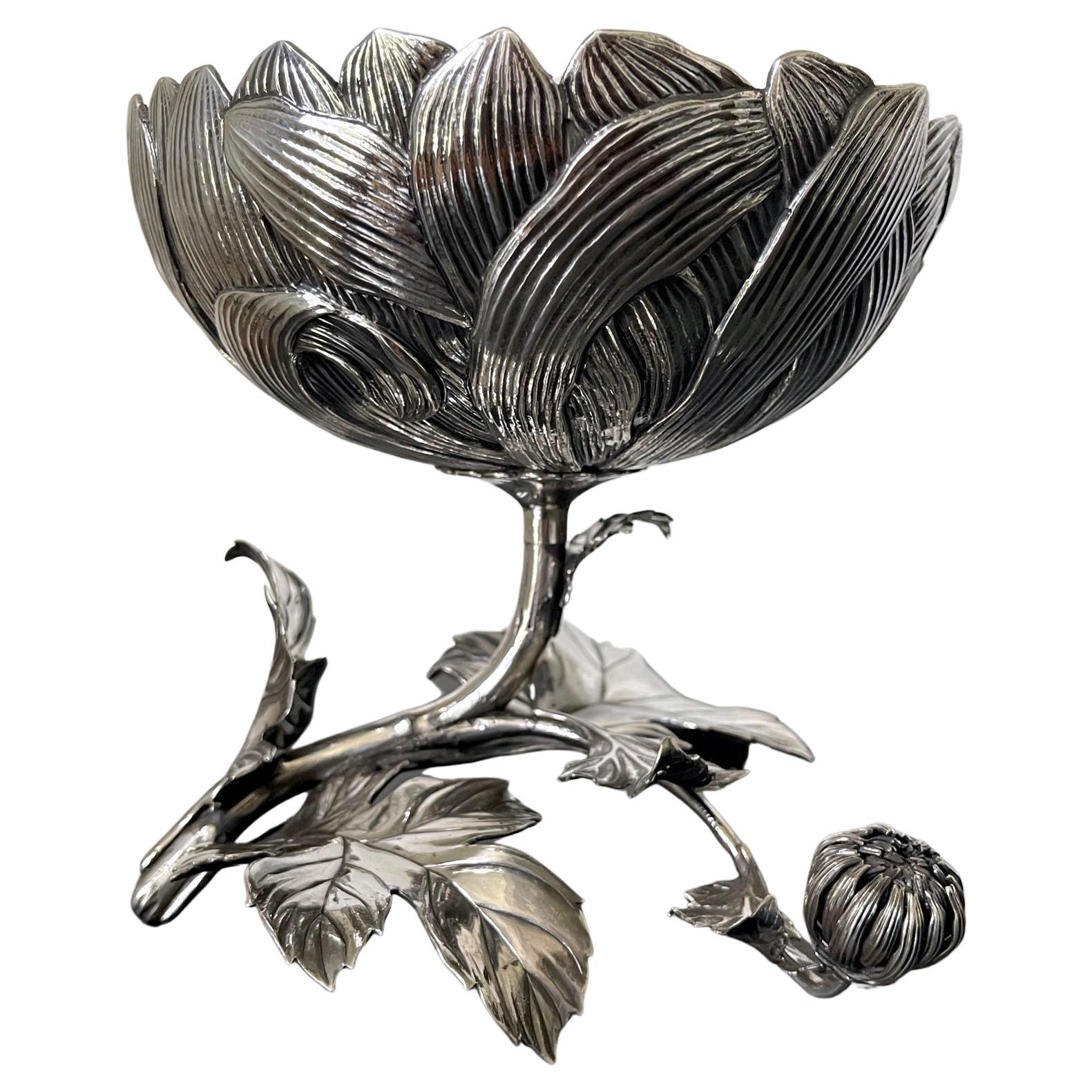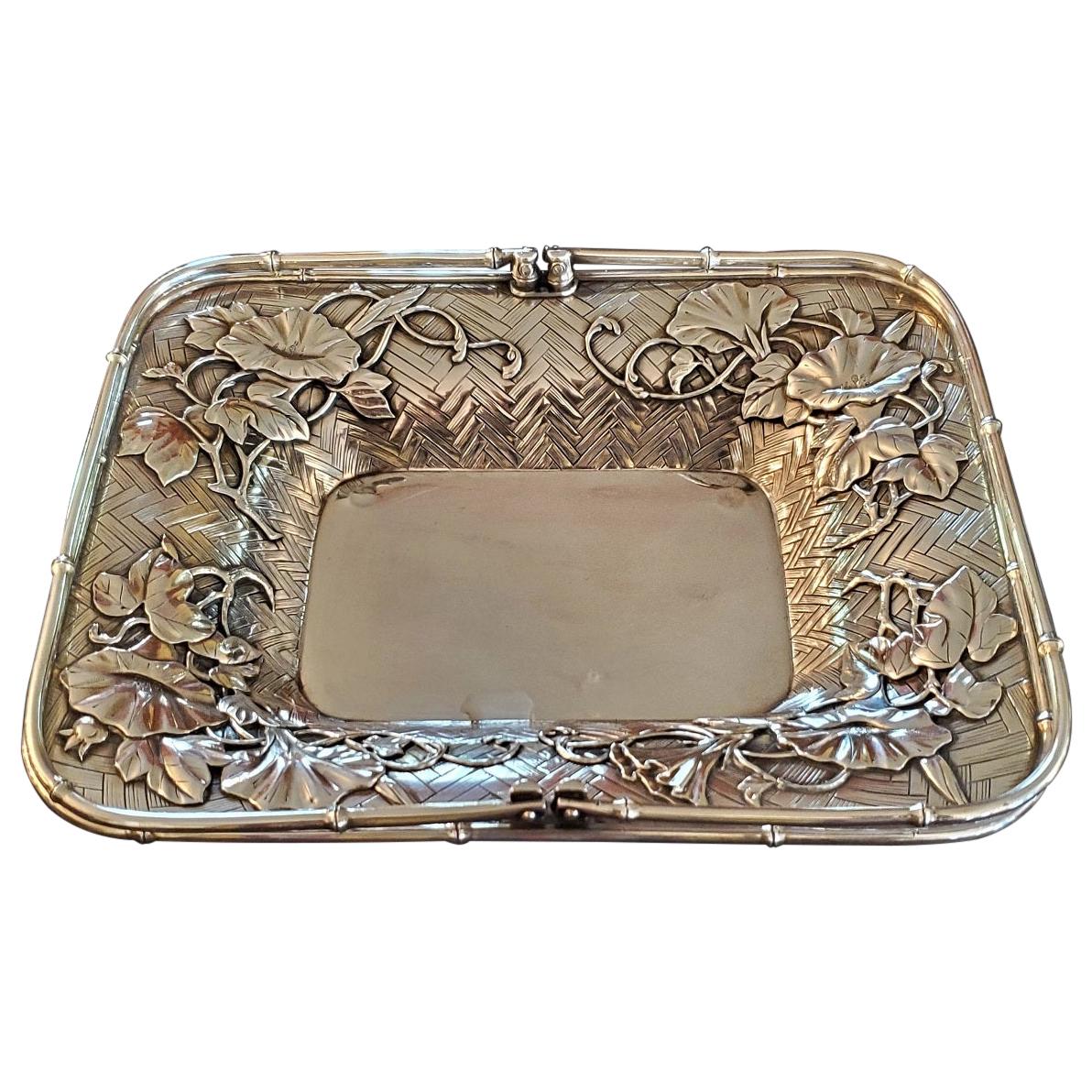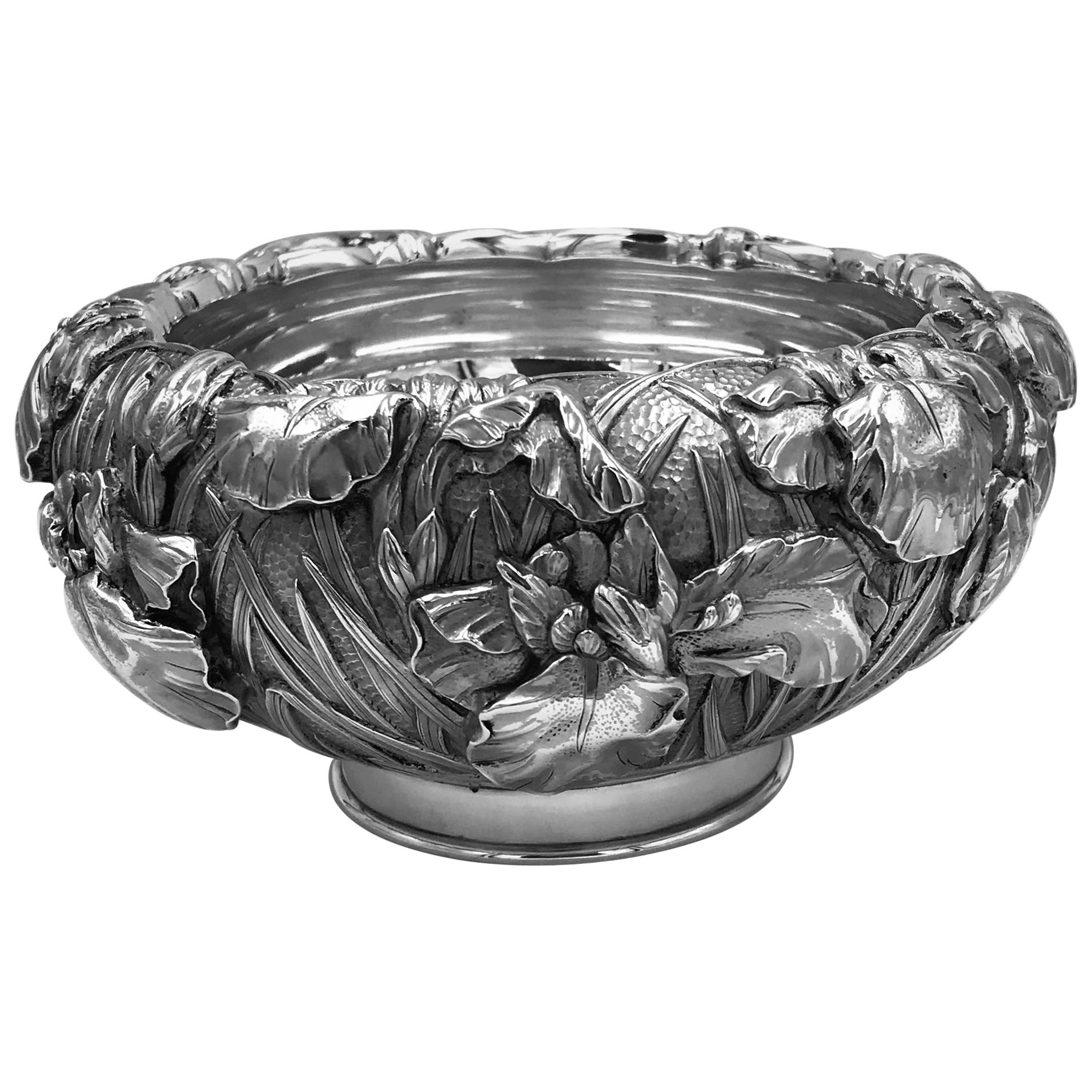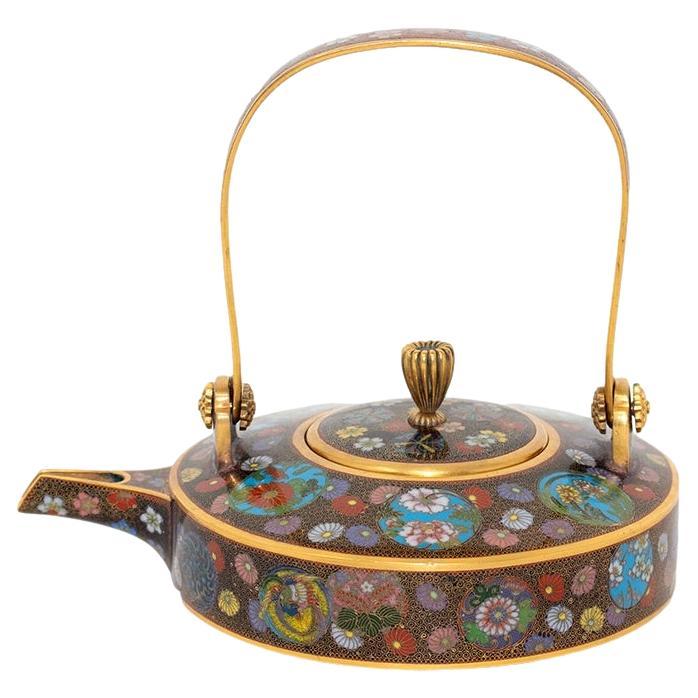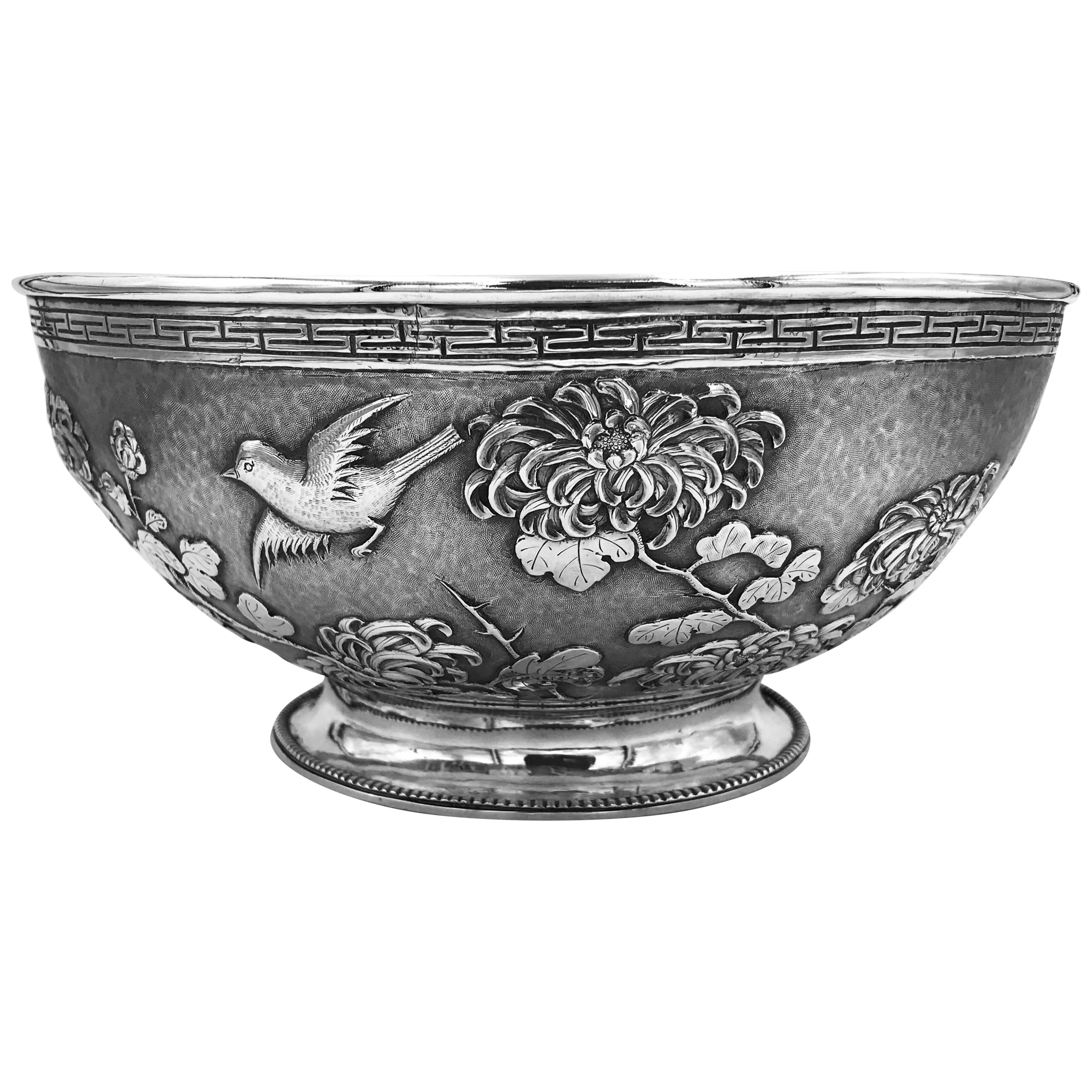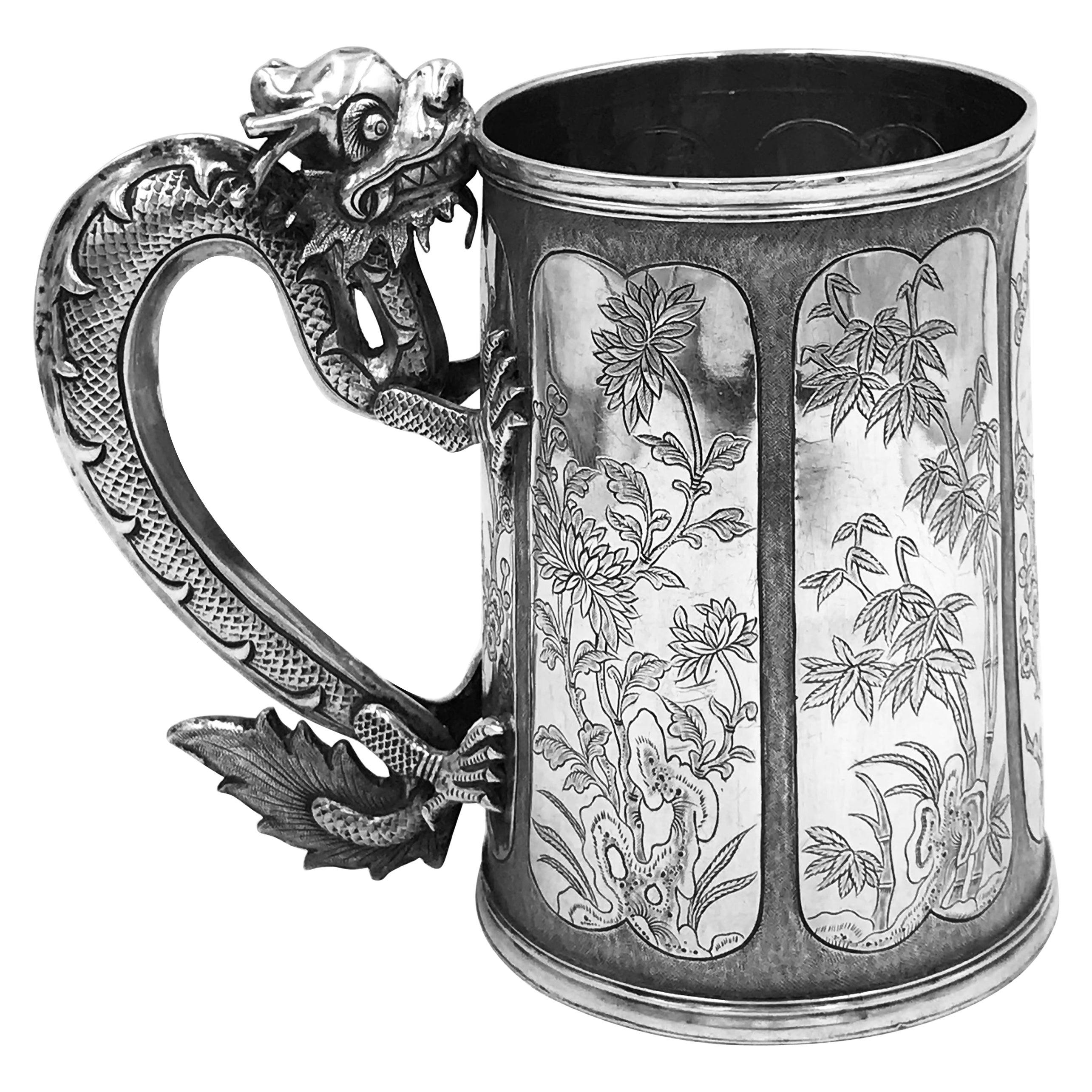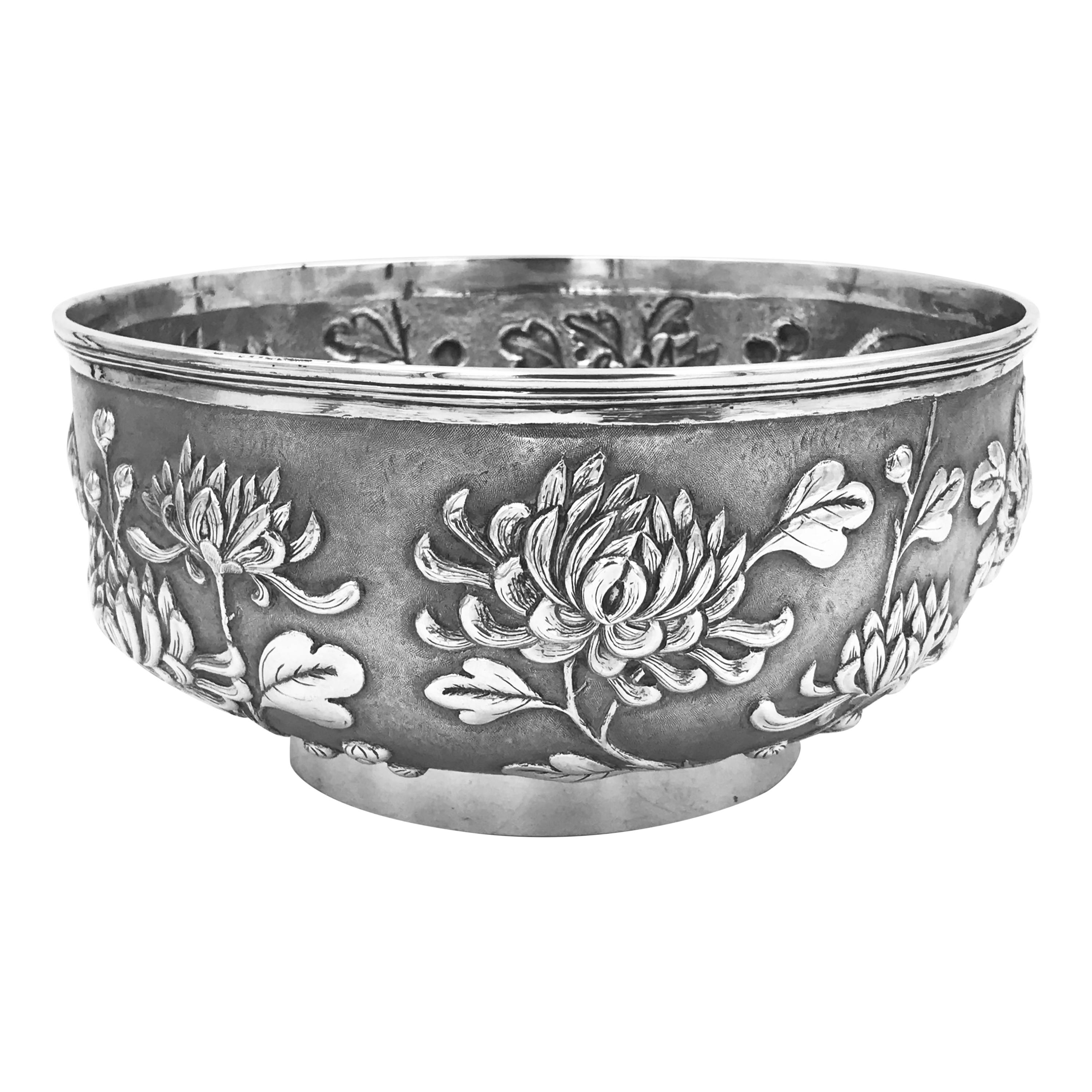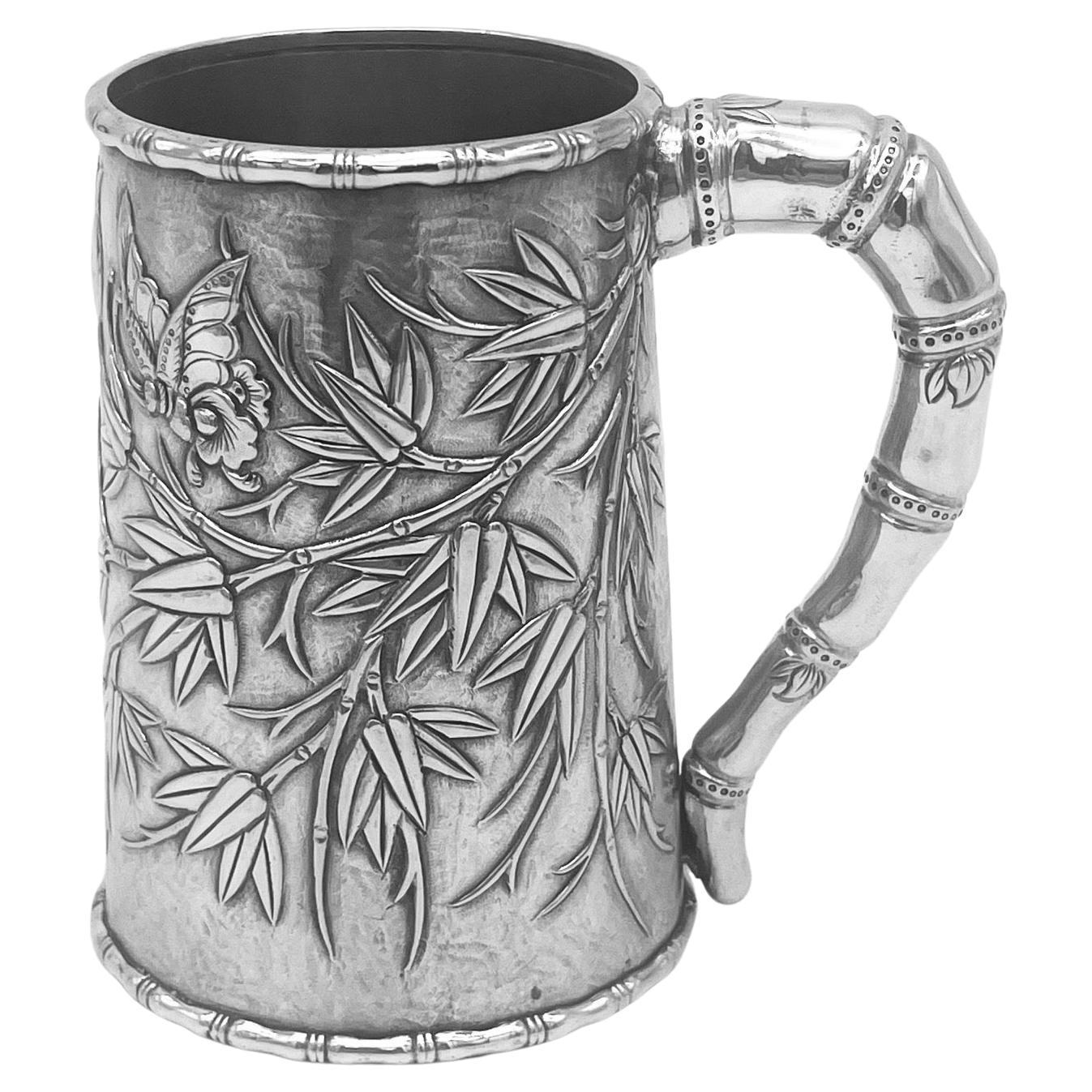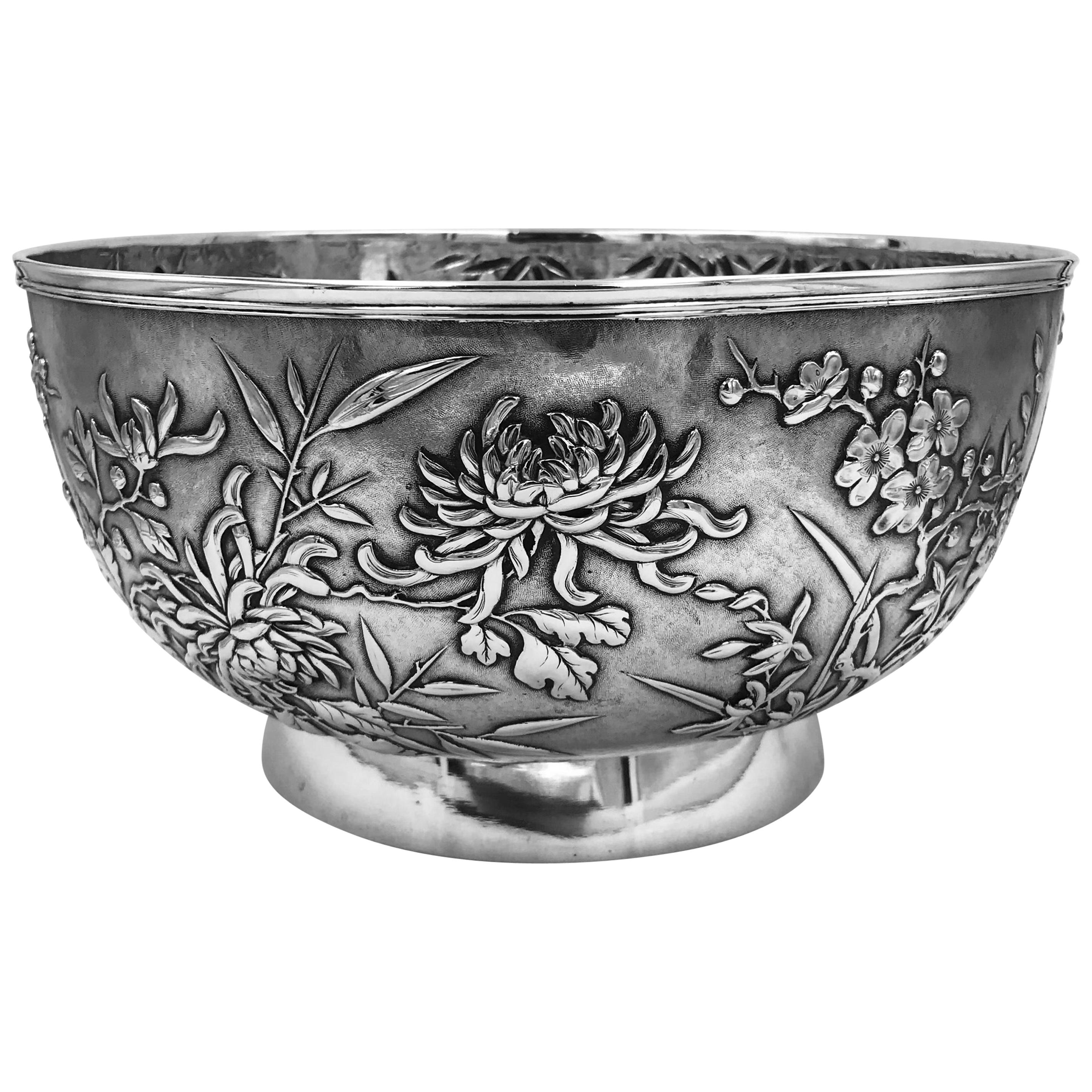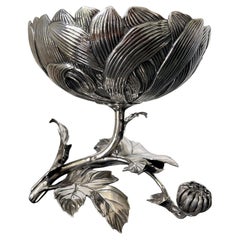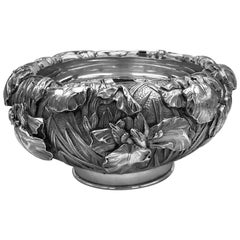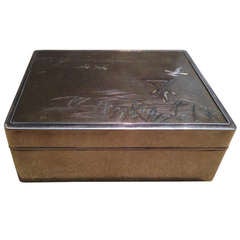
Japanese Mixed Metal Silver Box Meiji Period Circa 1900
View Similar Items
1 of 10
Japanese Mixed Metal Silver Box Meiji Period Circa 1900
About the Item
- Dimensions:Height: 2 in (5.08 cm)Width: 4.5 in (11.43 cm)Depth: 6 in (15.24 cm)
- Place of Origin:
- Period:
- Date of Manufacture:1900
- Condition:Wear consistent with age and use.
- Seller Location:Redding, CA
- Reference Number:1stDibs: LU9640948442
You May Also Like
- Japanese Sterling Silver Chrysanthemum Dish Meiji PeriodBy MusashiyaLocated in Atlanta, GAAn exquisite Japanese sterling silver ornamental bonbon dish, circa 1890-1900. The piece was rendered in the shape of a stemmed branch of chrysanthemum blossom and was made for export market. Both botanically realistic and stylish, the piece showcases a high degree of artisanal sensitivity and technical ability of the silversmith who created this lovely piece. The petals that form the exteriors were outlined with deep and fluid relief lines of sculptural quality. The branches and leaves were rendered with attentions to the smallest details, with molding and surface texturizing using chasing in contrast with hammering. The interior of the dish is equipped with a conforming inner dish and when it is taken out, revealing the chased lines. The piece, although practical, is basically an okimono in sculptural form, a work of art on its own. It weighs about 22 ounces. Under the dish, it is marked "Pure Silver" in Kanji and SM in a rectangular cartouche. The research (carried out by Adrien Von Ferscht, an expert and author on Asian Export Silver) identified it to be Sadajiro Musashiya...Category
Antique 1890s Japanese Japonisme Metalwork
MaterialsSterling Silver
- Japanese Meiji Period Sterling Silver 2 Handled Basket by Katsu MiyamotoBy Miyamoto Shoko 1Located in Dallas, TXPRESENTING a GORGEOUS, VERY HIGH QUALITY and EXTREMELY RARE piece of Japanese Meiji Period Sterling Silver 2 Handled Basket by Katsu Miyamoto. EXQUISITE, EXCEPTIONAL, RARE & IMPORTANT! This is definitely a Meiji Period piece due to the fact that it is marked with the sterling silver mark “jungin”. The Meiji period was from 1868 to 1912 and in 1928 a law was introduced in Japan compelling the use of decimal marks for silver. This pre-dates that decimalization law. We are of the opinion that it is from circa 1900. Miyamoto Shoko was founded in 1880 as the first silverware specialty shop. In 1899, Miyamoto Shoko’s silverwares were ordered by the family members of the Emperor of Japan, and to this day, they are making fine and graceful handicrafts with skillful craftsmen. Loved by numerous customers since the Meiji era, Miyamoto Shoko’s products have also been given to Princess Mako and Princess Kako of Akishino, as well as Princess Aiko Toshinomiya, on their birthdays. Katsu Miyamoto (宮本勝), in 1880, in order to increase the sales of tobacco and cigarettes to foreigners founded the Moyamoto Shoko company, which produced different silverwares in general and particularly silver cigarette cases. Miyamoto’s first name, Katsu (勝) in some sources is written as “Masaru”, since 勝 kanji can be pronounced in both ways. This basket is of the HIGHEST QUALITY imaginable! The top of the basket has the MOST GORGEOUS repousse work of flowers, probably lotus flowers, with leaves and foliage. It has an underlying chevron effect chasing, reflecting parquetry. The 2 handles are cast in the form of bamboo handles. The rim of the top likewise is cast as bamboo. The base is equally stunning in a different way! It is chased with a chevron effect, like parquetry flooring and the four feet simulate pieces of sliced bamboo with an interlinking gallery of support columns, likewise, simulating bamboo. The QUALITY of WORKMANSHIP is OUTSTANDING! The pieces weighs exactly 525 grams. This piece takes my breath away! This is one for the SERIOUS COLLECTOR of EXQUISITE AND RARE Japanese silver. You will not find another like it, for sale ANYWHERE ELSE IN THE WORLD …… I know as I have searched! Provenance: Acquired from a Dallas Private Collector. Dimensions: 9.6 inches wide, 7.6 inches deep and 2.75 inches tall ( 7.25 inches tall with handles up) Condition: Very good. It looks like the base 4 legged gallery, has been repaired/re-attached to the base, but otherwise it is excellent and of Museum quality. The Meiji period (明治時代 Meiji-jidai?), also known as the Meiji era, is a Japanese era which extended from October 23, 1868 through July 30, 1912.[1] This period represents the first half of the Empire of Japan during which Japanese society moved from being an isolated feudal society to its modern form. Fundamental changes affected its social structure, internal politics, economy, military, and foreign relations. The period corresponded with the reign of Emperor Meiji after 1868, and lasted until his death in 1912. It was succeeded by the Taishō period upon the accession of Emperor Taishō to the throne. Solid silver pieces...Category
Early 20th Century Japanese Meiji Metalwork
MaterialsSterling Silver
- Japanese Silver BowlLocated in London, GBA Meiji period Japanese silver bowl with extremely detailed iris decoration and of typical double-skin form. The bowl dates form circa 1895 and was made by Katsuzo Mune, and their ma...Category
Antique Late 19th Century Japanese Metalwork
MaterialsSilver
$5,121 - Japanese Silver BowlLocated in London, GBA fine Japanese silver bowl from the Meiji period of traditional double-skin, or double-wall, construction, showing especially detailed irises around...Category
Antique Early 1900s Japanese Meiji Sterling Silver
MaterialsSilver
$16,004 - Japanese Meiji Period Cloisonne Enamel Sake PotLocated in Newark, EnglandFine Japanese Meiji period cloisonne enamel Sake pot. The Sake pot of rounded form with with clean edges profusely decorated with blossoming flowers throughout upon a black ground ba...Category
Antique Late 19th Century Japanese Meiji Metalwork
MaterialsMetal, Enamel
- Vintage Yogya Silver Kala Bowl by Tom's Silver, circa 1960's, IndonesiaLocated in Austin, TXA bold and well crafted Indonesian Yogya (Jogja, Djokja) silver bowl by Tom's Silver, Yogyakarta, Java, Indonesia, circa 1960's. The elegant bowl features a striking design of a Kala face, a protective monster often found above temple doors, and representative of time, death, and rebirth. A pair of makara flank the wide open, smiling mouth. A stylized foliate design surrounds the Kala. Kala are analogous with the Kirtimukha, or face of glory, originating in India and associated with Shiva. Both beings are devourers of evil and tasked with protection The bowl features two beaded borders, and a scalloped rim. The bowl set on three short out-swept feet. Stamped mark to the underside reading "TOM" "800" "DELUX". TOM stands for Tom's Silver, perhaps the most famous silver workshop in Yogyakarta. 800 is the purity of the silver (80%). DELUX is a common mark on Yogya silver...Category
Vintage 1960s Javanese Metalwork
MaterialsSilver
Recently Viewed
View AllMore Ways To Browse
Japanese Iron Kettle
Cast Iron Tea Kettle
Cloisonne Namikawa
Japanese Dragon Mask
Wedding Favor
Antique Cast Iron Tea Kettle
Antique Cast Iron Teapot
Antique Japanese Iron Teapot
Cast Bronze Incense Burner Censer
Chinese Bronze Ding
Chinese Censor Bronze
Chinese Plique A Jour
Cloisonne Deer
Japanese Bronze Censer Dragon
Japanese Bronze Crane And Turtle
Japanese Cast Iron Teapot
Large Japanese Bronze Incense Burner
Chinese Bronze Teapot
